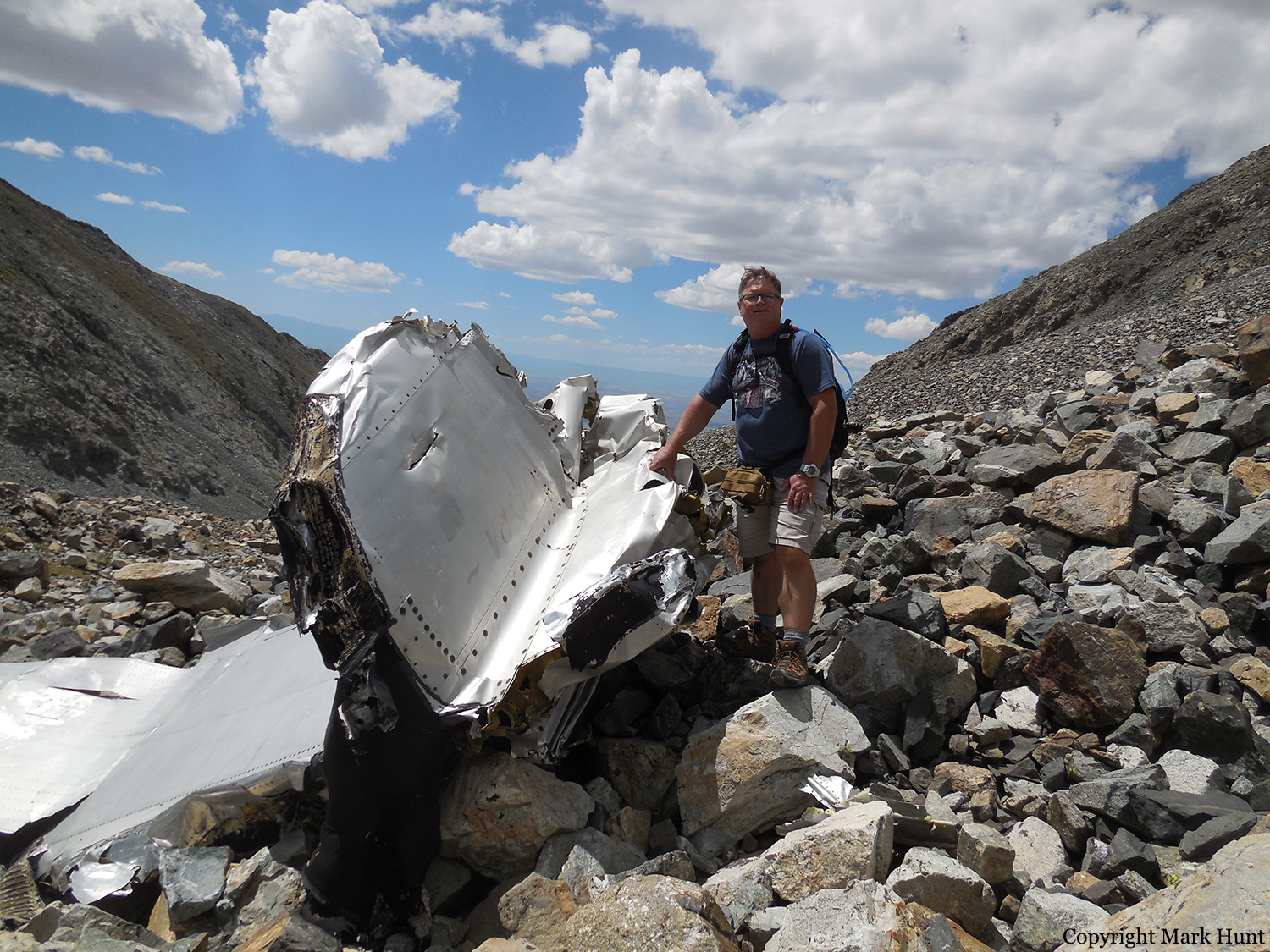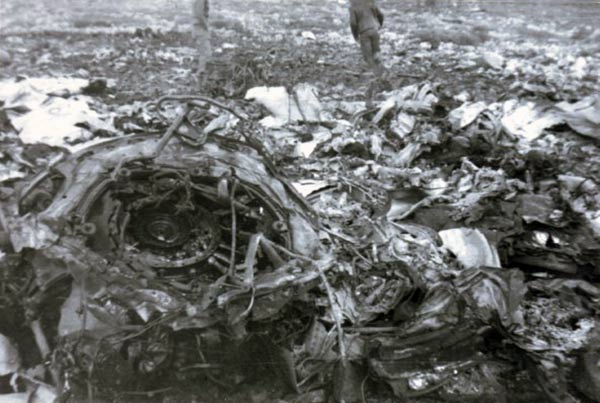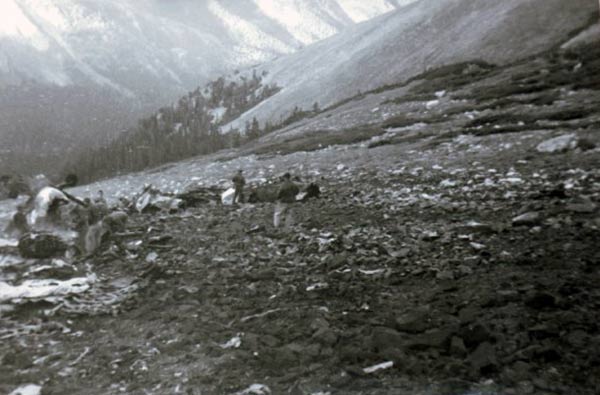Crash of a Lockheed L-1049H Super Constellation on Peak California: 3 killed
Date & Time:
Dec 15, 1965 at 0130 LT
Registration:
N6914C
Survivors:
No
Schedule:
Los Angeles – Chicago
MSN:
4811
YOM:
1957
Flight number:
FT914
Crew on board:
3
Crew fatalities:
Pax on board:
0
Pax fatalities:
Other fatalities:
Total fatalities:
3
Captain / Total hours on type:
5036.00
Circumstances:
The crew was performing a cargo flight from Los Angeles to Chicago. While cruising at the assigned altitude of 13,000 by night, the four engine airplane struck the south face of California Peak (13,849 feet high) located about 21 miles northeast of Alamosa, Colorado. The wreckage was found a day later 150 feet below the summit and all three crew members have been killed.
Crash photo by Mark Hunt, copilot's son.
Crash photo by Mark Hunt, copilot's son.
Probable cause:
It was determined that the crew failed to modify his route over Alamosa Vortac according to the flight plan and failed to turn to VA10 route for undetermined reason.
Final Report:





















